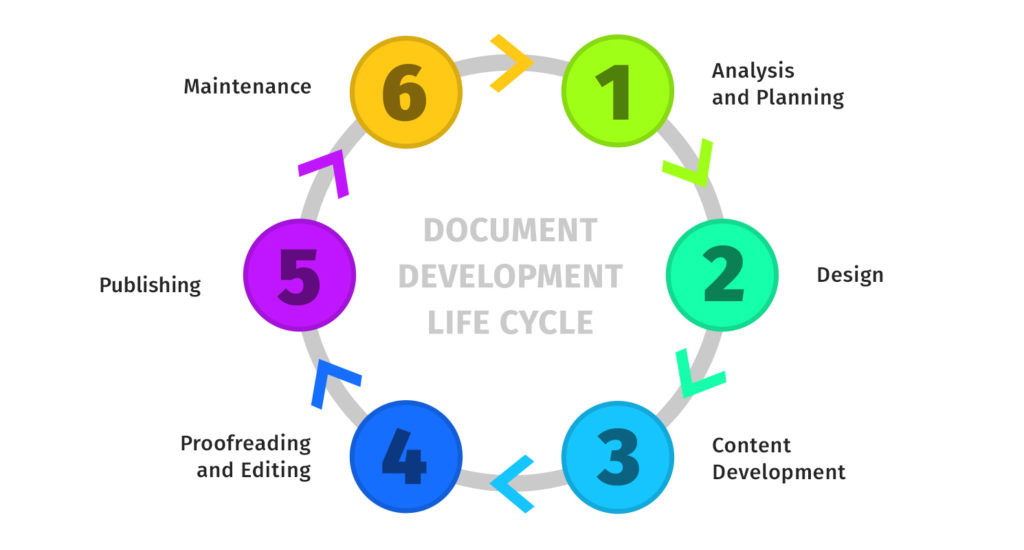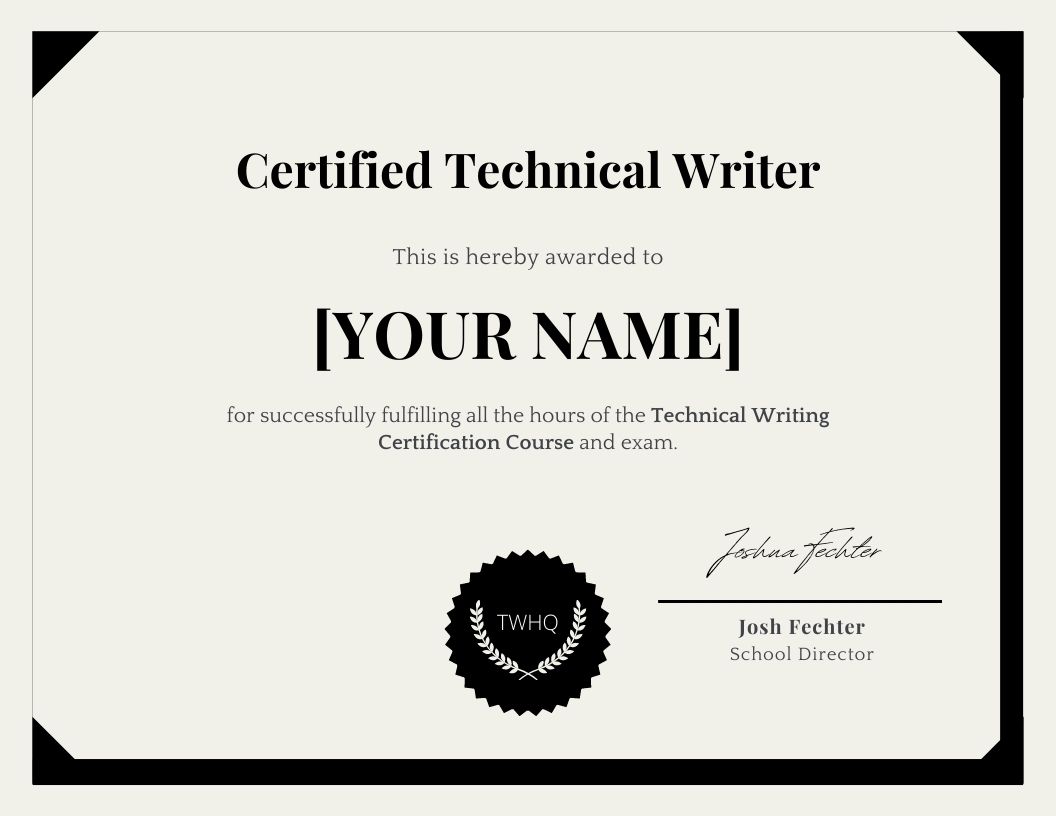For any business to prosper and grow progressively, it is crucial to document every stage of product development and acquisition.
This is why each document creation involves a systematic process. Unfortunately, while most technical writers are subject matter experts, some might not understand the document development lifecycle, which can be disastrous for the business.
The complete life cycle involves a series of tasks, including proper layout, technical writing, editing phase, technical review, audience analysis, and more.
This article involves an in-depth understanding of the document development life cycle to help you create user-friendly, high-quality documentation.
If you’re interested in learning more via video, then watch below. Otherwise, skip ahead.
What is Document Development Life Cycle (DDLC)?
DDLC or Document Development Life Cycle is a systematic process that enables document creation in a specific order to create easy-to-understand content for the users and simplify complex topics.
This content management system consists of technical writers and other content creators, and each person needs to understand the documentation development life cycle. Following a systemic process allows the content developers to enhance the complete documentation’s quality and precision and deliver it on time.
The technical writers assemble the document development process in the following phases:
- Analysis and planning
- Design
- Content development
- Proofreading and editing
- Publishing
- Maintenance

Let us look into each phase individually to understand its importance to ensure the delivery of only relevant information with technical accuracy.
Analysis and Planning
The first step is to study the target audiences and their requirements for the product features. Then, technical writers need to analyze and plan the documentation as per the audience’s demand.
To understand the software product, you will have to test it and then write about its features and the technical part of the document development life cycle. You might also need to have a word with the SMEs for self-review and relevant information.
This phase involves audience analysis to understand their level of knowledge about technical writing. The writer needs to analyze if they target the internal or the external end-users. The external users would have little or zero technical knowledge about the product. At the same time, the internal users would know more about the software product’s features and how it works.
During the analysis, there are high chances that you will get hold of complex information that will enable you to solve complicated problems. At the end of this phase, you will have to create a clear and workable strategy to eliminate all user pain points and provide valuable outcomes.
You can use specific tools to help you out with analyzing and planning the documentation requirements, such as:
- Help authoring tools- If you are a budding company or have only one or two technical writers, Microsoft Word will do the job. However, this tool will not be sufficient for a larger business, and they will have to explore other authoring tools such as ClickHelp to cope with the development life cycle- DDLC.
- Tool for translation- To speed up the documentation process, tech writers can simultaneously leverage translation tools to write and translate their documentation.
- The professional writers or the software developers can use other tools for taking screenshots, diagramming, screencasting, and video capture to produce excellent results with a simpler yet more profound understanding of the product.
Whichever tool or product requisite you deem necessary must be included in the planning phase of the software development life cycle to ensure utmost accuracy.
Design
This stage of the document lifecycle defines the formats, proper layout, and style that the writers will use to produce the technical content. Professional writers can leverage various authoring tools and software applications for bulk document processes like:
- Squibler
- MS Office
- Adobe Frame Maker
- Help N Doc
- Madcap Flare
For better formatting, the technical writers can use DITA or XML and Camtasia to capture and edit videos.
Be mindful, as the designing stage will decide the structure and format of your content. Therefore, building a state-of-the-art information architecture that presents simplified documentation for the target audience ensures a seamless end-user experience.
Use the authoring tools to create professional, trustworthy, and audience-gaining documentation. In addition, you can create high-end logos, focusing on fonts and colors for efficient branding.
Moreover, your documentation should be unique and stand out amongst the competitors- or else, there would be no reason for the audience to choose your company over the others.
Content Development
Now, it is time to get down to business. Start writing your documents based on your plan and design. Your content must provide the target audience with valuable, understandable, and applicable information.
To generate more organic traffic and sales conversion for the company, you can produce content to provide online help in online documentation to demos, videos, user manuals, and guides.
For your ease, you can create drafts. Start with a draft TOC (table of contents), and this will keep you on track and eliminate the chances of redundancy or irrelevant content. For experienced writers, their first draft will do just fine. But it takes a few attempts to achieve perfection in your content.
Ensure that the draft you create for your product documentation must follow the format plan and design template.
Proofreading and Editing
While writing might not take up much of the writer’s time, editing and reviewing the entire draft can be time-consuming.
Before publishing the initial release, it is essential to test every aspect of every document you create to meet the end user’s requirements and specifications, and product features. The documents go under the eyes of the relevant subject matter expert to edit, peer review, check and test the complete documentation.
During reviewing and editing, the relevant personnel or a technical writer verifies the technical data, illustrations, grammar mistakes, figures, and other aspects of the document format. During proofreading, the content experts remove bugs from the complete content draft of the technical document.
To ensure that the content is free of grammar errors and plagiarism, you can use tools like SaaS- Software-as-a-service. This tool will allow the quick, precise, and simple review process while allowing the reviewers and technical writers to work remotely and not miss out on the latest comments and topics.
Publishing
In this progressive digital era, printed versions for publishing documentation are outdated. To reach your target audience faster, publish your documentation online. Online documentation offers many benefits, including:
- 24/7 documentation accessibility:
The users can access your online document anytime and from any place.
- Easy to update
You can revise and make changes in all the online documentation in one go, and all the end-users will get access to the new, updated version instantly.
- Enhances case deflection
As the users can reach out to your content by themselves, they do not require assistance from any support team.
- More sales conversions
When the documents are public, more people can get solutions for their problems, acquainting them with the product features. Hence, generating more leads.
- Efficient marketing
Online documents work as a great marketing tool as they have better visibility on search engines due to keyword integration.
- Restricted access
Mostly the published documents are available for the public view, while some documents are only for private users. Online technical documents provide restricted, password-protected access to sensitive data.
Maintenance
If you think that your work ends after publishing the documents, you are wrong. The market demand, user needs, and product features are seldom constant. This is why updating the software products is essential, especially if there is a new release.
To upkeep the maintenance, it would be best to create a well-defined plan of regular updates and work on it accordingly. Then, you can put any of the authoring tools to use to initiate and track changes with the updates.
Additionally, part of maintenance includes document retirement—the formal process of removing or archiving documents that are obsolete, outdated, or no longer relevant. This ensures that only accurate and updated information remains accessible, reducing risks and maintaining compliance with regulatory requirements. Retired documents can be archived for record-keeping or legal purposes, depending on the organization’s policies.
Key Takeaway
Document development life cycle-DDLC is a complete process of creating high-quality technical documents for internal and external users.
It involves requirement analysis, designing phase, content creation, proofreading, publishing, maintenance, and update phases to ensure all the aspects of technical writing are perfect with no grammar mistakes and plagiarism.
A well-crafted and smooth software development life cycle streamline better teamwork, maximum audience engagement and sales conversion while maintaining a loop of satisfied customers- a complete win-win.
Check out our Technical Writing Certification Course to learn more about becoming a successful technical writer.
FAQs
What is the Document Development Life Cycle (DDLC)?
The Document Development Life Cycle (DDLC) is a systematic process for creating, managing, and delivering high-quality technical documents. It includes phases like analysis, design, content development, proofreading, publishing, and maintenance to ensure clarity, accuracy, and usability.
Why is audience analysis important in DDLC?
Audience analysis helps technical writers understand the knowledge level, needs, and preferences of the target audience. This ensures that the content is relevant, user-friendly, and tailored to the specific requirements of internal or external users.
What are the steps involved in approval and finalization?
Approval and finalization involve reviewing the document for compliance, obtaining feedback from key stakeholders, and securing sign-offs from designated authorities. This step ensures the document meets formatting, content, and regulatory standards before release.
How is document retirement handled in DDLC?
Document retirement refers to formally removing documents that are obsolete, outdated, or replaced. This process involves archiving the retired documents for record-keeping or legal compliance while ensuring active documents remain accessible and relevant.
What are the benefits of publishing documentation online?
Online publishing offers:
- 24/7 accessibility for users.
- Easy updates and instant access to revised versions.
- Enhanced visibility on search engines, improving marketing efforts.
- Restricted access for sensitive information through password protection.
Why is maintenance an ongoing phase in DDLC?
Maintenance ensures that documents stay up-to-date with changing market demands, user needs, and product features. This includes regular updates, tracking changes, and retiring outdated documents to maintain accuracy and compliance.
If you are new to technical writing and are looking to break-in, we recommend taking our Technical Writing Certification Course, where you will learn the fundamentals of being a technical writer, how to dominate technical writer interviews, and how to stand out as a technical writing candidate.





















